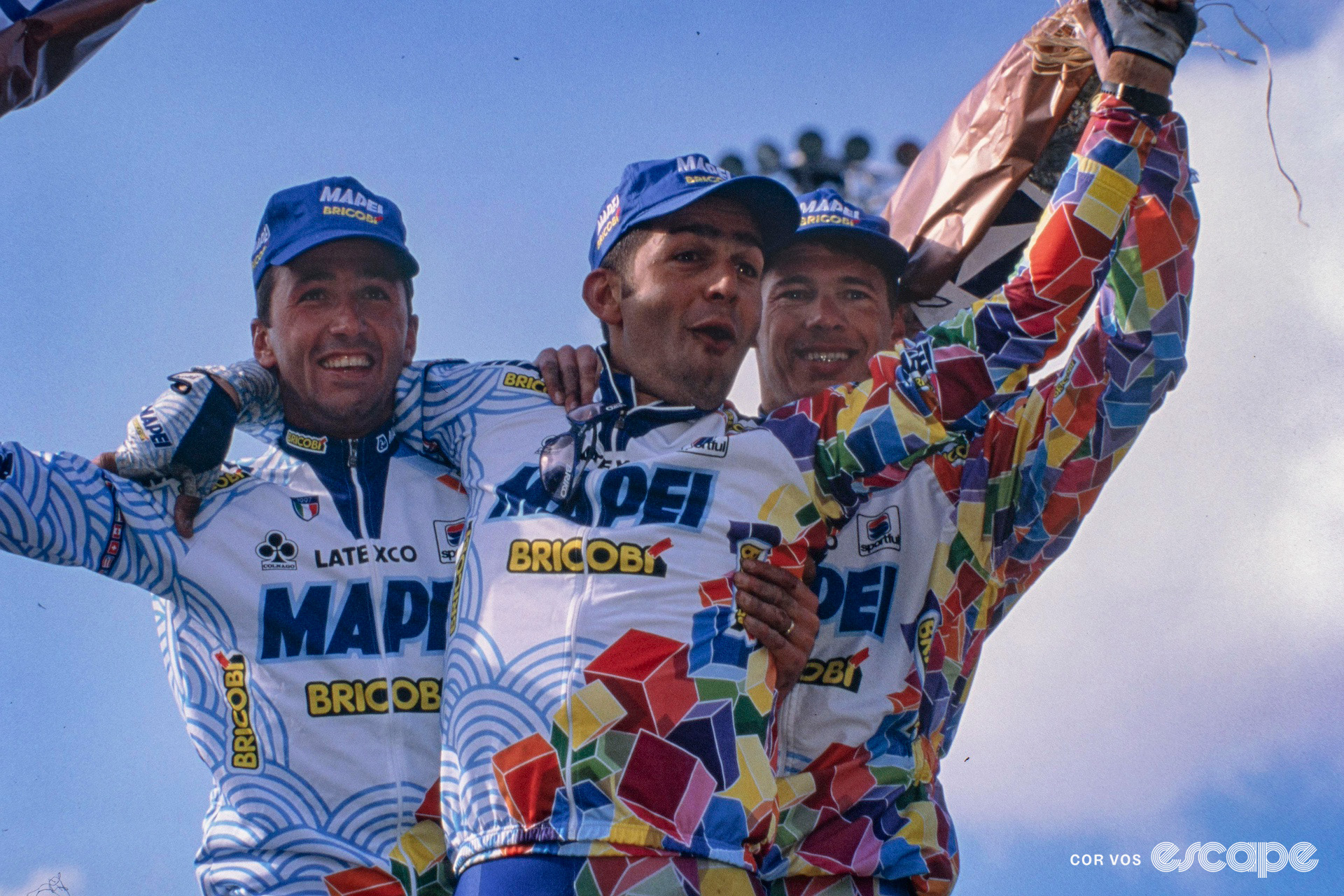Did we do a good job with this story?


Selecting the four greatest team kits in the history of cycling – and yes, Mapei made the cut.
The all Mapei-Bricobi podium of the 1998 Paris-Roubaix: winner Franco Ballerini, second Andrea Tafi and third Wilfried Peeters. Photo: © Cor Vos